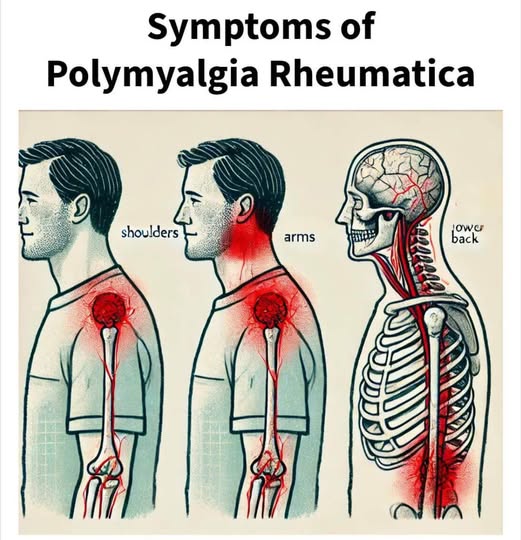I first noticed something was off when simple movements became painful. Polymyalgia rheumatica is an inflammatory condition that primarily affects the muscles and joints, especially around the shoulders and hips. The discomfort can appear suddenly or develop gradually over several days. I learned that it usually affects people over the age of 50, and it’s often confused with fibromyalgia due to similar muscle pain. However, polymyalgia rheumatica has distinct causes, symptoms, and treatment approaches.
Shoulder Pain That Interrupts Life
The first warning sign I experienced was persistent shoulder pain. Tasks that once felt routine—like reaching for a cup or putting on a sweater—became challenging. The pain hit both shoulders and was particularly intense at night, making restful sleep almost impossible. Sometimes, the ache spread down my upper arms, creating a deep, relentless soreness that didn’t seem to ease no matter what I tried. It was clear to me that this wasn’t ordinary stiffness or fatigue.

Hip and Thigh Discomfort
Alongside my shoulder pain, I started noticing stiffness in my hips and thighs. Walking up stairs, standing for long periods, or even turning in bed became difficult. The stiffness was more than just occasional soreness; it persisted throughout the day and worsened after periods of inactivity. I realized that polymyalgia rheumatica often targets these areas, making everyday movement frustratingly slow and uncomfortable.
Morning Stiffness That Won’t Quit
One of the most noticeable symptoms for me was morning stiffness. Each day, I would wake up feeling as though my body had aged overnight. My muscles felt heavy, joints tight, and simple stretches were met with resistance. This stiffness usually lasted for an hour or more, making it hard to start the day. I discovered that many people with this condition share this struggle, which can significantly impact daily life and routines.
Fatigue and General Malaise
Beyond the localized pain, I experienced an overall sense of fatigue and discomfort. Polymyalgia rheumatica can leave you feeling weak, tired, and sometimes even feverish. Simple tasks that were once effortless suddenly required more energy, and I found myself needing frequent breaks. Recognizing these systemic symptoms was essential for me to understand that my body was signaling a deeper issue.
Recognizing the Signs Early
Early recognition of these symptoms can make a big difference. I found that being attentive to my body and noting the persistence and patterns of pain helped me seek medical advice promptly. Since polymyalgia rheumatica can be linked to giant cell arteritis, which affects blood vessels and can lead to serious complications, it’s crucial not to dismiss early warning signs. Consulting a healthcare professional allowed me to start treatment before the condition worsened.

Living with Polymyalgia Rheumatica
Adjusting to life with this condition has required patience and careful planning. I learned to pace myself, incorporate gentle exercises, and manage my daily activities around the times when stiffness and pain were most severe. With proper medical guidance, lifestyle adjustments, and attention to warning signs, I have been able to maintain much of my independence and reduce discomfort. Polymyalgia rheumatica may be challenging, but understanding its symptoms has empowered me to live more mindfully and respond effectively to my body’s needs.

















